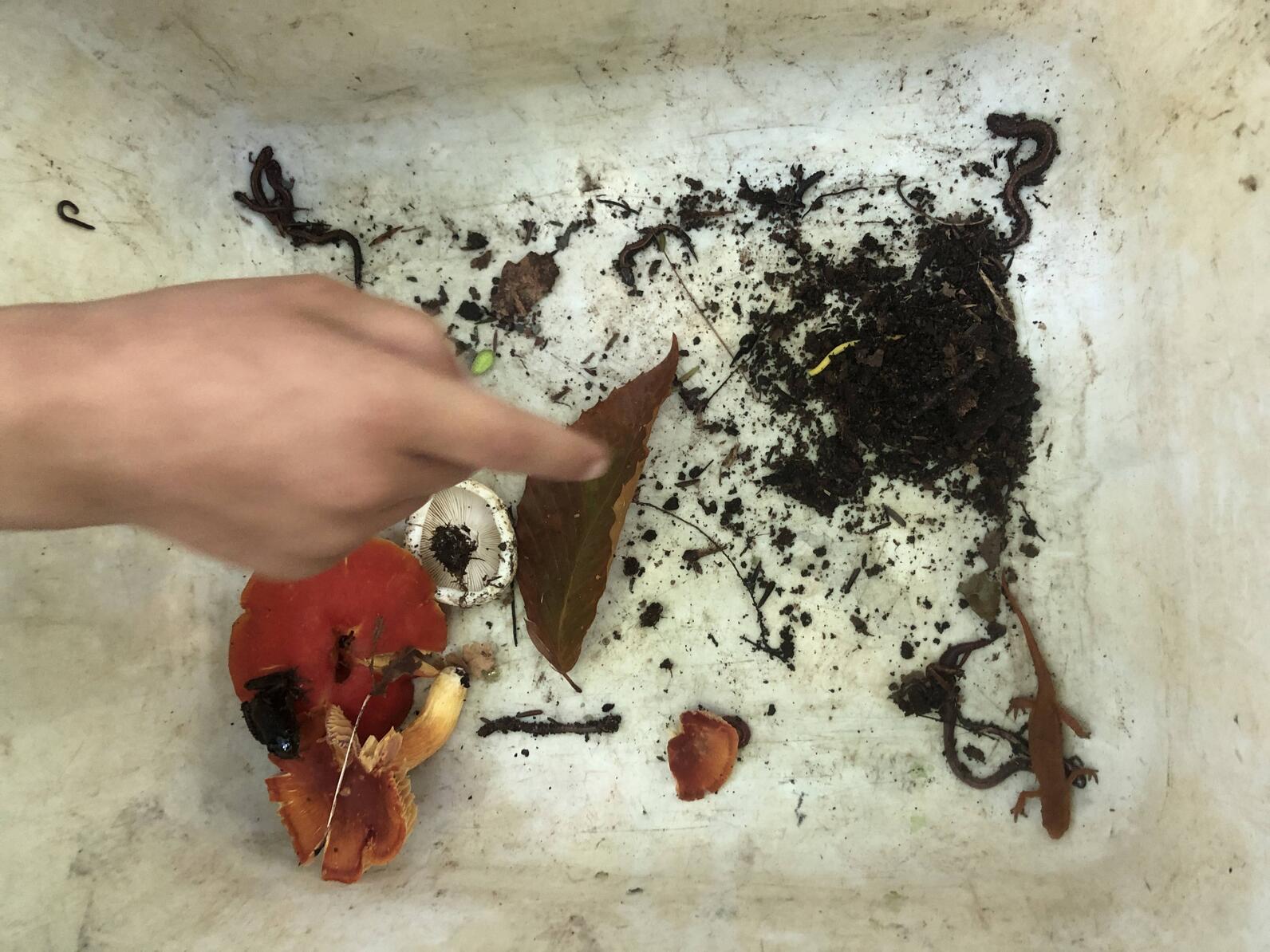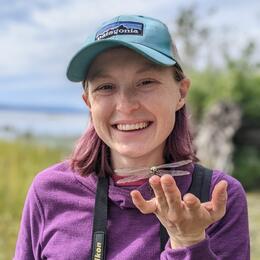Welcome to the UnSchool Blog! Every month I will write about the things that we do and learn at UnSchool. I will also include additional resources and activities that you can do at home in connection with the topics we learned about.
Last week, the first day of Fall UnSchool 2024 went very well. It was lovely to meet all the new students and see a few familiar faces again.
During our morning learning block, we headed to the forest to search for critters. We found over 15 red-backed salamanders, several eastern newts, a wood frog, centipedes, millipedes, worms and so many colorful mushrooms. The kids were really into using guides to learn about and identify the animals and fungi that they were finding. We learned that many animals that live in the forest like damp areas, and hide under rocks, logs, and leaves. Every time we rolled over a log or rock we put it back so the animals could have their home back. We also noticed that the animals were frequently brown and black and camouflaged well with the forest floor.
The eastern newts we saw were in their juvenile stage known as red efts. They are orange and live in the forest. They will stay in this stage for 2-3 years up to about seven years before making their way to the water to become adults. At this point they will be a dark grayish green color with orange dots and a flat tail for swimming. We will probably see this stage of newt in Beaver Pond in the spring. Here is a link to an article from the Smithsonian Zoo about newts: Eastern newt | Smithsonian's National Zoo and Conservation Biology Institute (si.edu). Here is a link to a short video about newts: https://youtu.be/wZCIIlIwcIs.

After we put all the animals back in their under-log homes. Everyone headed back out into the woods with the journals they decorated at the beginning of the day to do a sit spot. The goal was to sit silent and solo for 10 minutes while they drew and wrote about the things they found during the leaf litter search. We will be adding to these journals every month.
In the afternoon we learned that an ecosystem is a place where living and non-living things work together. Living things include things that are alive such as deer, ferns, and mushrooms as well as things that were once alive, such as feathers, and rotting logs. Some non-living things we brainstormed included rocks, water, and air. Each student was then given two pictures of living things to hold. The goal was to connect as many of them as possible with yarn representing the energy flow among organisms within the ecosystem. Of course, the yarn started at the sun. Then we connected to hemlock trees, to red squirrels, to coyotes, to mice and on and on, each time asking, “What eats this or what does this eat?”. The group worked together slowly building a complex web that “looked like a spider web”. At the end, we discussed what would happen if one population decreased. We dropped strings one at a time and watched as the food web fell apart.
If you are interested in incorporating some of these topics into your at-home learning, below are a few worksheets and activities you can use. For the micro-hike, explore your yard or nearby nature area looking for producers (make food), consumers (eat food), and decomposers (make soil). For the food web investigation, explore a nearby ecosystem and fill in the first chart with living things, then add arrows to show energy flow and create a food web. To expand the learning, use the second chart to include evidence for each of the connections.





